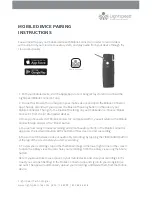
IOT-WORKSHOP
DTU-H10X
Wi-Fi/Ethernet to RS485/RS232 Server User Manual
http://www.iotworkshop.com
- 70 -
DTU
AP,
LAN IP:10.10.100.254
TCP, Server
8899
DTU
STA,
LAN IP:10.10.98.254
WAN IP: 10.10.100.101
TCP,
Client
10.10.100.100: 8899
2#
3#
WIFI
MCU
MCU
UART
UART
DTU
1#
WIFI
STA,
LAN IP:10.10.99.254
WAN IP: 10.10.100.100
TCP, Server
8899
Figure 46.
Two DTUs Connection Through AP
Q6: How to avoid IP address confliction when apply DTU?
The following address allocation method can avoid the IP address confliction for dynamic and
static IP address mixed application.
DTU dynamic IP address range from 100 to 200 for last IP address segment.
Such as default IP: 10.10.100.254. When DTU works as AP, the IP address DTU can
allocate to STA is from 10.10.100.100 to 10.10.100.200;
So, if user needs to set static IP for dedicated STA internal network, the available IP address
range can start from 10.10.100.1 to 10.10.100.99.
Q7: PC works as server, all DTUs works as data acquisition card and connect
with PC, how to configure this application?
Network structure as below figure: Three DTU setup 3 TCP links with PC server. DTU 1# works
as AP and all devices connect to DTU 1# through WiFi interface;
PC Setting:
IP address: 10.10.100.100;
Network Protocal:TCP/Server, Port ID: 8899;
DTU 1# Setting:
Works as AP mode;
LAN IP address: 10.10.100.254;
Network Protocal:TCP/Client, Port ID: 8899; Application IP address:10.10.100.100;
DTU 2# Setting:
Works as STA mode;
WAN connection type: Static IP: 10.10.100.101;
Network Protocal:TCP/Client, Port ID: 8899; Application IP address:10.10.100.100;
LAN IP address: 10.10.99.254 (Different net segment with WAN port);
DTU 3# Setting:
Works as STA mode;
WAN connection type: Static IP: 10.10.100.102;
Network Protocal:TCP/Client, Port ID: 8899; Application IP address:10.10.100.100;
LAN IP address: 10.10.98.254 (Different net segment with WAN port);










































